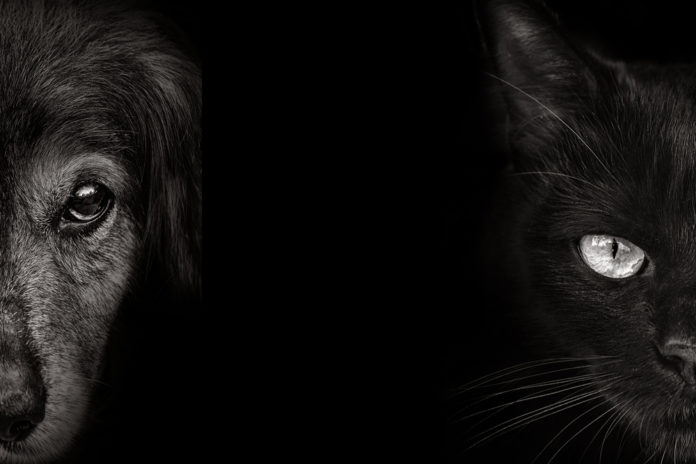What iridology can tell you about your pet’s health

By studying the iris of a dog or cat’s eye, a veterinarian trained in iridology can uncover important details about an animal’s health and well-being.
Your dog or cat’s eyes can tell you a lot about his health. In fact, iridology is a modality that helps practitioners garner information about an animal’s well-being by studying the iris of his eyes. It is not a diagnostic test, but more of way to determine the location of issues within the body. In my own practice, I use iridology as another tool in my belt to help figure out abnormal health issues in my patients. This article covers how iridology works, and how it can be used in dogs and cats.
How does the iris relate to bodily health?
We have all heard the old saying that “the eyes are the windows to the soul”, and it may be more true than we know. Some consider iridology a pseudoscience because it has not been documented in “modern” research methods. But this doesn’t make it fake. When a canine or feline (or human!) embryo is developing in the womb, the tissue that will ultimately form the iris of the eye is inherently and neurologically linked to all the other tissues in the body. In other words, the tissues of the iris are directly connected via nerves to the brain and other parts of the body.
Dr. Ignatz Von Pecezely was the primary founder of iridology. After witnessing an owl break a leg, he noticed that a small lesion showed up in the bird’s iris. This discovery led him to study the development of the iris during the embryonic stage, and he subsequently mapped the various areas of the body onto the iris. My own father had a lesion in his iris that correlated to cancer in the esophageal region. I found this lesion six months before he was diagnosed with this cancer via conventional medicine. If that isn’t a reason to believe in and use iridology as a tool, then I don’t know what is.
Iridology as a diagnostic technique
- When using iridology to help ascertain the state of a human’s health, we first look at the color of the iris. Green or hazel eyes are called biliary eyes in iridology. Green-eyed individuals may have more issues with their livers and gallbladders, along with fat or lipid problems. Blue eyes are also called lymphatic eyes and may indicate issues with lymph and immunity. Brown, also called hematogenic eyes, indicates more blood-related issues. These eye colors may be different in dogs and cats, but the concept holds that different eye colors are associated with predispositions for certain types of disease.
- Once we look at the predominant iris color, we look for any other colors that might be present. Yellow or orange could signify a liver issue, or a drug or toxin deposit, such as a heavy metal. Black and white lesions can indicate chronicity or acuteness, while other colors can indicate improper waste disposal within the body.
- The sclera (white of the eye) also has stories to tell. Different vessels can indicate medical issues as well as point to an area of the iris that correlates with a specific body region.
Once we look at the color and the sclera, we then look at the iris areas themselves, checking for any lesions and other abnormalities.

- The iris has a certain amount of tightness in the weave of its tissues. The tightness or looseness of the weave correlates to the strength or weakness of the tissues in the entire body and is often referred to as the constitution. Individuals with a weak constitution often have more health issues than those with a strong or tightly-woven constitution.
- The irises of cats often exhibit “freckles” or “iridal atrophy”, but conventional practitioners didn’t know to link them to anything other than the eye itself. However, the regions of the iris these lesions are found can explain or point to other diseased areas in the body.
- Many of my patients have “stress rings” or “cramp rings” in their irises. They essentially look like the rings on a tree stump, and indicate a large amount of neural and muscle tension. These rings are often found in rescue animals that have been holding stress within their bodies.
 In canine and feline patients prone to hyperlipidemia, or too much fat, we often see a lesion called a “lymphatic rosary”, which appears as a string of small white clouds in the outer zone of the iris.
In canine and feline patients prone to hyperlipidemia, or too much fat, we often see a lesion called a “lymphatic rosary”, which appears as a string of small white clouds in the outer zone of the iris.- The very outer edge of the iris is representative of the skin layer. When this layer is dark, it indicates that normal skin-cleansing properties are not functioning correctly and toxins are building up which can later manifest as dermatitis or rashes.
Lesions in the iris can look like holes and are termed lacuna. They are all different shapes and in different locations. Each shape corresponds to a different issue or degree of severity. My dad’s lesion was a jellyfish shape or “medusa lacuna” in the esophageal region of the iris, indicating a cancerous issue. We not only look at the shape and location of the lacuna, but also its depth and color tell us how chronic an issue may be.
While I would not use iridology as a sole diagnostic tool, it can be useful in pinpointing an issue when other tests fail to reveal what is wrong with an animal patient. To learn more, visit spaceandmotion.com/health/iridology.htm.




